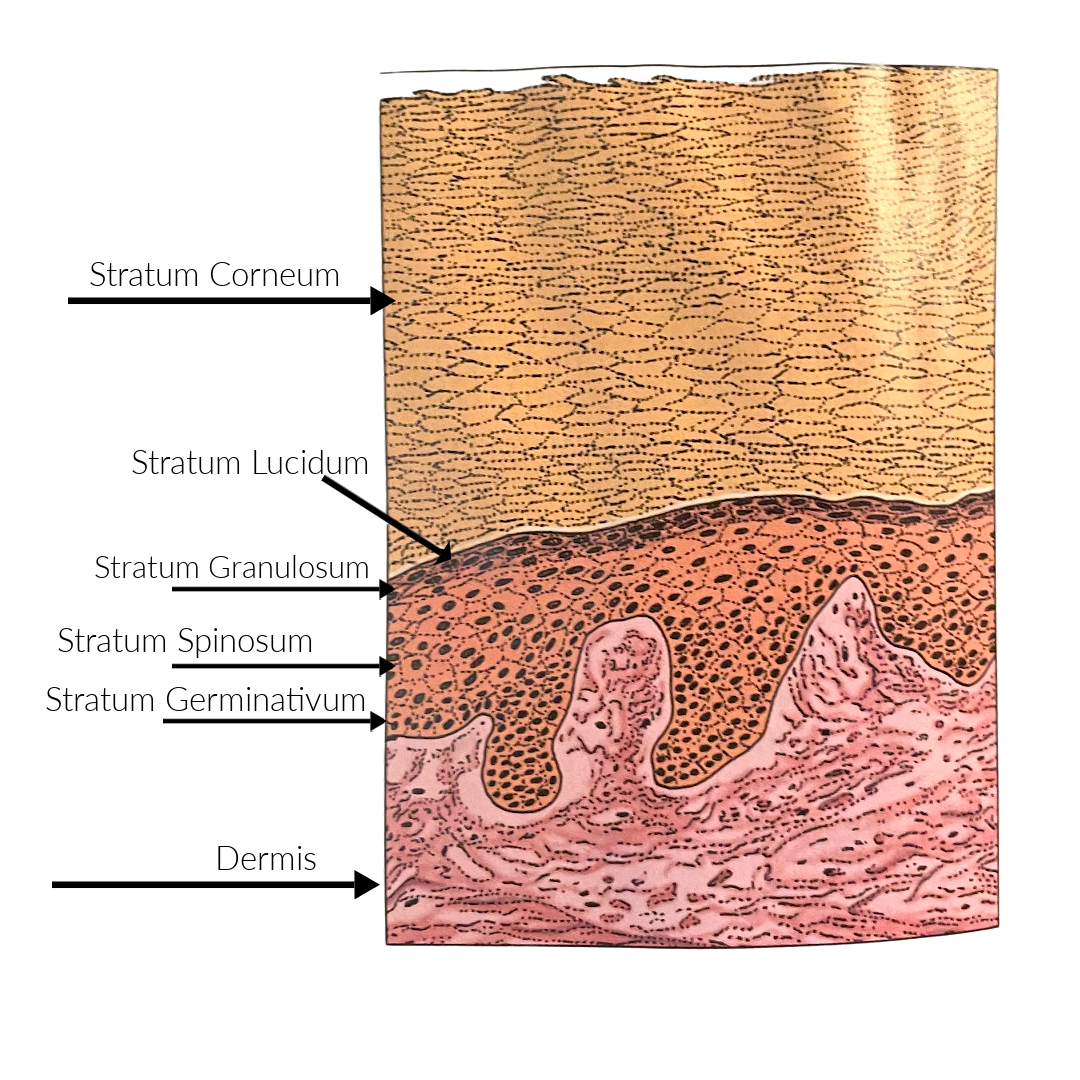
Penetration enhancers in skin care, and is your skin a sponge?
Share
Facial skin care products are designed to nourish and protect the skin. Penetration enhancers are ingredients that are added to skin care products to increase the absorption of active ingredients into the skin. In this blog post, we will take a look at a few different types of penetration enhancers used in facial skin care products, and list a few examples that are commonly spotted on INCI lists. We will also look briefly at the limitations of penetration enhancers, and touch on the “your skin is a sponge” idea. Spoiler: your skin is not a sponge. Penetration enhancers exist, but in cosmetics, they can only do so much.
3 Types of Penetration Enhancers
Lipids
Certain lipids may be used as penetration enhancers in skin care products. These are naturally occurring substances that are found in the skin's barrier. When applied topically, they can help interact with the lipids in the stratum corneum to diffuse resistance which can increase the absorption of active ingredients, but likely only to a certain extent. As in, a few layers deeper into the stratum corneum.
Surfactants
Surfactants are another type of penetration enhancer commonly used in facial skin care products. They work by reducing the surface tension of the skin, which may increase the penetration of active ingredients.
Solvents
Solvents are another type of penetration enhancer commonly used in facial skin care products. They primarily work by dissolving the skin's natural oils, which can increase the penetration of active ingredients.
Here are 10 commonly used penetration enhancers:
Propylene glycol - This is a versatile, water-soluble penetration enhancer that helps to deliver active ingredients deeper into the skin.
Dimethyl sulfoxide (DMSO)/Dimethyl Isosorbide - two of the more effective penetration enhancers out there. Commonly used in transdermal drug delivery systems, and can also be used in skin care products.
Ethanol -a solvent and penetration enhancer that helps to dissolve active ingredients and deliver them more effectively into the skin.
Glycerin - commonly used humectant and possible penetration enhancer that helps to improve the skin's hydration and deliver active ingredients.
Oleic acid - fatty acid that can help to increase the permeability of the skin barrier, allowing active ingredients to penetrate deeper.
Lecithin - an emulsifier and penetration enhancer that can improve the absorption of active ingredients.
Azone - synthetic compound known for its high penetration-enhancing properties.
Urea - It is a natural moisturizing factor and penetration enhancer that can improve the skin's hydration and permeability.
Limonene – This is a natural terpene that can increase the permeability of the skin barrier and enhance the delivery of active ingredients. When included on an inci list, this can be a naturally occurring component of an essential oil, or an isolated compound used for fragrance, increasing permeability or other benefits. It also happens to be a naturally occurring known allergen.
Although penetration enhancers do help actives absorb a little better into say the stratum corneum layer of the skin, it’s very important to note some facts. Our skin is a barrier, well designed to keep things out. The statements on the internet you see like “your skin is a sponge” or “everything you put onto your skin will end up in your bloodstream” are misinformation. The most common supporting argument you will see presented by the “your skin is a sponge” crowd will probably be related to the existence of transdermal drug delivery sytems. So yes, there are instances where pharmaceutical companies have managed to figure out how to deliver drugs trans dermally, but the science, effort and the cost to create these drug delivery systems goes well beyond anything that would be worthwhile in a skin care product. But hey, if you don’t believe me, I would refer you to someone more knowledgeable on the subject: Michelle Wong, PhD., aka Labmuffin on social media. She is a trusted source of information, with much deeper breadth of knowledge and experience than I have. Here is a great post she wrote on the topic https://labmuffin.com/the-60-of-products-absorb-into-your-bloodstream-myth/